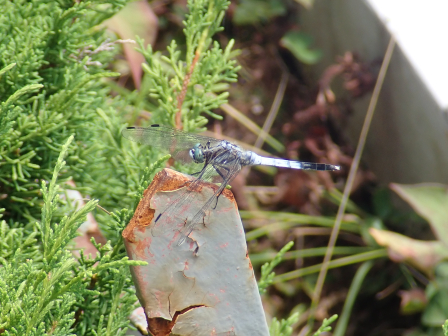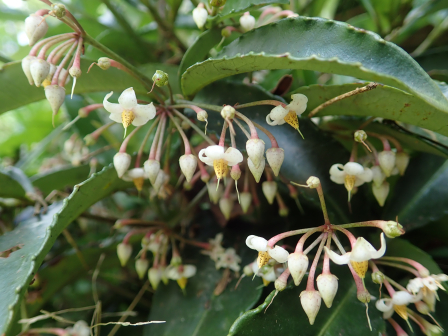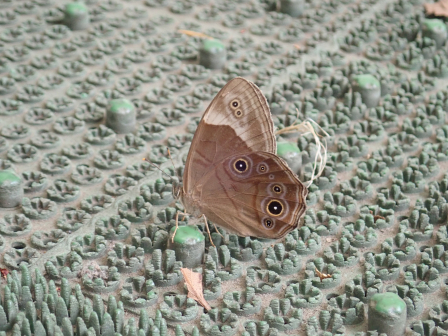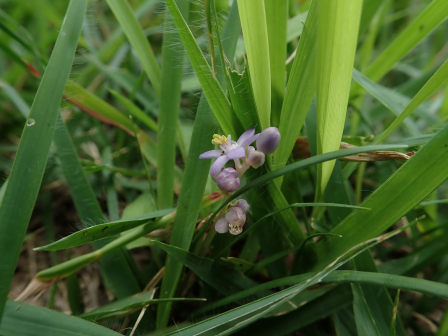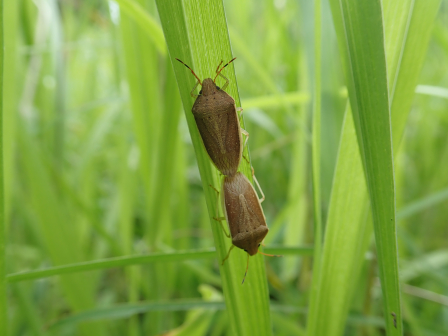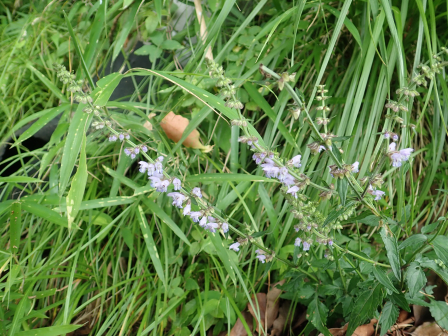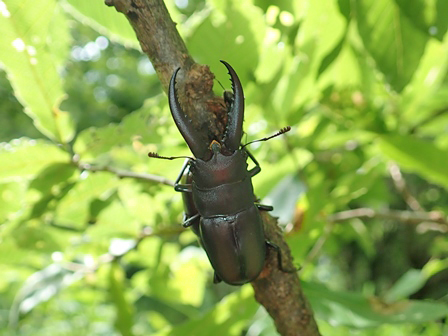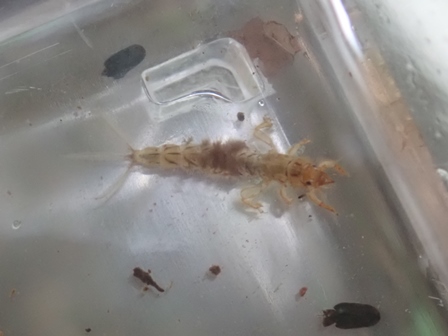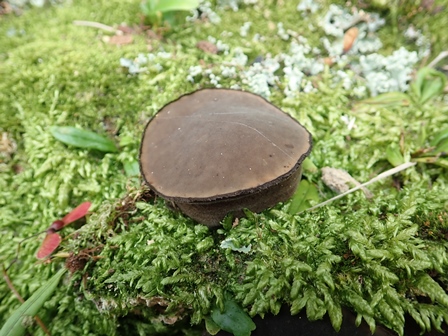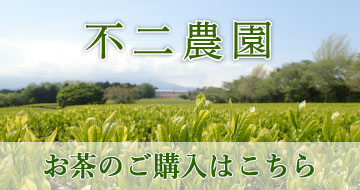フィールド日記
2022.08.12
シオカラトンボ
築山の池でシオカラトンボを見つけました。最も普通にみられるトンボの1種です。オスは成熟すると、写真のように青白い粉を全体に生じます。一方で、メスは成熟しても黄色いので、ムギワラトンボとも呼ばれています。
I found a "Shiokara-Tombo (シオカラトンボ)" dragonfly near the pond in the artificial hill. They are one of the most common dragonflies in Japan. After male ones mature, they produce the blue-white powder on their whole bodies as you can see in the photo. On the other hand, female ones are yellow even after they mature, so they are sometimes called "Mugiwara-Tonbo (ムギワラトンボ)".
2022.08.09
アカボシゴマダラ
校舎内にアカボシゴマダラが迷い込んでいました。本来は、奄美諸島に分布している蝶ですが、人為的に持ち込まれたものが関東地方に定着し、数を増やしています。特定外来生物に指定されており、許可のない運搬や飼育などが禁止されています。
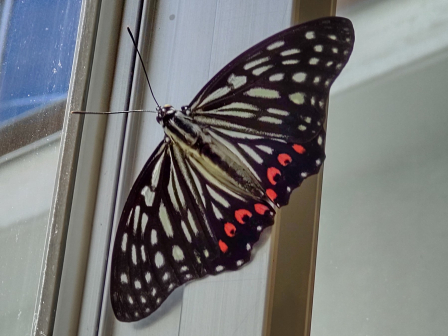
An "Akaboshi-Gomadara (アカボシゴマダラ)" butterfly was wandering into the school building. They originally live in the Amami islands, but some of them were brought by humans to the Kanto region and started to settle there. These days, they are increasing in number, so they are designated as an invasive alien species, which means you can not bring and raise them without permission.
2022.08.05
マンリョウ
マンリョウの花が咲いていました。秋から冬にかけて赤い実を多数つけるため、縁起の良い木としてよく知られていますが、夏に白い花を咲かせます。花全体に小さい点(腺点)があります。
"Manryou" trees are in bloom. They are known as lucky trees because they bear a lot of red fruit form fall to winter, but they bloom white flowers in summer. The flowers have small spots (glands).
2022.08.02
クロヒカゲ
校舎の裏でクロヒカゲを見つけました。雑木林の近くなどに見られる蝶で、クヌギやコナラの樹液によく集まります。幼虫はササ類を食べます。
I found a "Kuro-Hikage" butterfly behind the school building. They are seen around thickets and often gather in the tree sap of Konara oak trees and Kunugi oak trees. Their larva eat Sasa plants.
2022.07.29
ヒメヤブラン
ススキ野原でヒメヤブランが咲いています。草地や林の中に生える多年草で、小さい薄紫色の花を上向きにつけます。不二聖心ではよく芝生に混じって咲いています。
"Hime-Yaburan (ヒメヤブラン)" plants are in bloom in the Japanese pampas grass field. They are perennial plants that grow in grass fields, forests and so on, and bear small light purple flowers upward. In our campus, they are often seen in lawns.
2022.07.26
イネカメムシ
ススキ野原でイネカメムシを見つけました。名前の通り、イネにつくカメムシで、害虫とされています。1970年以降は、あまり発生していなかったようですが、近年、再拡大しているとのことです。
2022.07.22
アキノタムラソウ
校舎の裏でアキノタムラソウが咲いています。アキノとつきますが、7月ごろから咲いているのを見かけます。
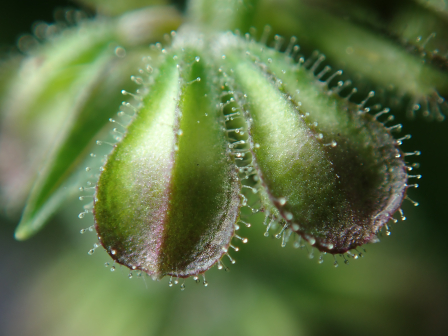
2022.07.19
ノコギリクワガタ
共生の森でノコギリクワガタを見つけました。ノコギリクワガタは大きさによって大アゴの形に変化があることが知られています。この個体は、大アゴがゆるく湾曲した中型の個体です。
I found a stag beetle called "Nokogiri-Kuwagata (ノコギリクワガタ)" in the Kyoseinomori (共生の森). It is well-known that this species has a different shape of mandible depending on their body size. This one's mandible is loosely curved, so it is categorized as a medium size.
2022.07.15
フタスジモンカゲロウ
図書館への渡り廊下でフタスジモンカゲロウの成虫を見つけました。カゲロウのなかまは成虫になってからは食物をとらず、寿命が短いことで知られています。
下の写真は、別の日に、自然探索クラブで裏道沿いの小川を調査した際に見つけた幼虫です。
I found an adult of "Futasuji-Mon-Kagerou (フタスジモンカゲロウ)" mayfly in the corridor to the library. Adults of mayflies don't eat and are known for their short lifespan.
The second photo shows a larva of this species found in a survey done by the nature explorers club on a stream along the back road.


